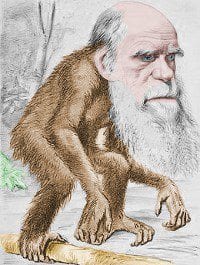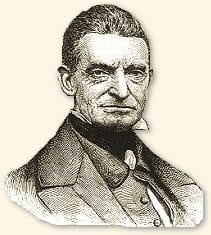Charles Darwin published his thesis ‘Origin of the Species’ on November 24th, 1859 – after more than twenty years of waiting to formerly resurrect the age old theory that had never gained any ground prior to his publishing. Maybe it just needed the backing of an anti-Christian, Illuminist power behind it to attack the Biblical creation story and Judaeo-Christian belief that God is the creator of all living things. A Theistic belief vs, an Atheistic belief.
Despite having its roots in ancient Greece, the theory of evolution was first brought to the attention of the scientific world in the nineteenth century. The most thoroughly considered view of evolution was expressed by the French biologist Jean-Baptiste Lamarck (1744-1829), in his Zoological Philosophy (1809). Lamarck thought that all living things were endowed with a vital force that drove them to evolve toward greater complexity. He also thought that organisms could pass on to their offspring traits acquired during their lifetimes. As an example of this line of reasoning, Lamarck suggested that the long neck of the giraffe evolved when a short-necked ancestor took to browsing on the leaves of trees instead of on grass.
This evolutionary model of Lamarck’s was invalidated by the discovery of the laws of genetic inheritance. In the middle of the twentieth century, the discovery of the structure of DNA revealed that the nuclei of the cells of living organisms possess very special genetic information, and that this information could not be altered by “acquired traits.” In other words, during its lifetime, even though a giraffe managed to make its neck a few centimeters longer by extending its neck to upper branches, this trait would not pass to its offspring. In brief, the Lamarckian view was simply refuted by scientific findings, and went down in history as a flawed assumption.
However, the evolutionary theory formulated by another natural scientist who lived a couple of generations after Lamarck proved to be more influential. This natural scientist was Charles Robert Darwin, and the theory he formulated is known as “Darwinism.”
Charles Darwin based his theory on various observations he made as a young naturalist on board the H.M.S Beagle, which sailed in late 1831 on a five-year official voyage around the world. Young Darwin was heavily influenced by the diversity of species he observed, especially of the different Galapagos Island finches. The differences in the beaks of these birds, Darwin thought, were a result of their adaptation to their different environments.
After this voyage, Darwin started to visit animal markets in England. He observed that breeders produced new breeds of cow by mating animals with different characteristics. This experience, together with the different finch species he observed in the Galapagos Islands, contributed to the formulation of his theory. In 1859, he published his views in his book The Origin of Species. In this book, he postulated that all species had descended from a single ancestor, evolving from one another over time by slight variations.
What made Darwin’s theory different from Lamarck’s was his emphasis on “natural selection.” Darwin theorized that there is a struggle for survival in nature, and that natural selection is the survival of strong species, which can adapt to their environment. Darwin adopted the following line of reasoning:
Within a particular species, there are natural and coincidental variations. For instance some cows are bigger than others, while some have darker colors. Natural selection selects the favorable traits. The process of natural selection thus causes an increase of favorable genes within a population, which results in the features of that population being better adapted to local conditions. Over time these changes may be significant enough to cause a new species to arise.
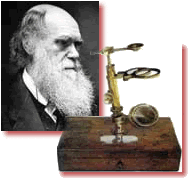
However, this “theory of evolution by natural selection” gave rise to doubts from the very first:
- What were the “natural and coincidental variations” referred to by Darwin? It was true that some cows were bigger than others, while some had darker colors, yet how could these variations provide an explanation for the diversity in animal and plant species?
- Darwin asserted that “Living beings evolved gradually.” In this case, there should have lived millions of “transitional forms.” Yet there was no trace of these theoretical creatures in the fossil record. Darwin gave considerable thought to this problem, and eventually arrived at the conclusion that “further research would provide these fossils.”
- How could natural selection explain complex organs, such as eyes, ears or wings? How can it be advocated that these organs evolved gradually, bearing in mind that they would fail to function if they had even a single part missing?
- Before considering these questions, consider the following: How did the first organism, the so-called ancestor of all species according to Darwin, come into existence? Could natural processes give life to something which was originally inanimate?
Darwin was, at least, aware of some these questions, as can be seen from the chapter “Difficulties of the Theory.” However, the answers he provided had no scientific validity. H.S. Lipson, a British physicist, makes the following comments about these “difficulties” of Darwin’s:
On reading The Origin of Species, I found that Darwin was much less sure himself than he is often represented to be; the chapter entitled “Difficulties on Theory” for example, shows considerable self-doubt. As a physicist, I was particularly intrigued by his comments on how the eye would have arisen.1
Darwin invested all his hopes in advanced scientific research, which he expected to dispel the “difficulties of the theory.” However, contrary to his expectations, more recent scientific findings have merely increased these difficulties.
In his book, Darwin never mentioned the origin of life. The primitive understanding of science in his time rested on the assumption that living things had very simple structures. Since mediaeval times, spontaneous generation, the theory that non-living matter could come together to form living organisms, had been widely accepted. It was believed that insects came into existence from leftover bits of food. It was further imagined that mice came into being from wheat. Interesting experiments were conducted to prove this theory. Some wheat was placed on a dirty piece of cloth, and it was believed that mice would emerge in due course.
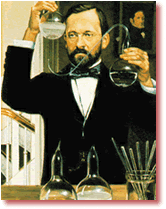
Similarly, the fact that maggots appeared in meat was believed to be evidence for spontaneous generation. However, it was only realized some time later that maggots did not appear in meat spontaneously, but were carried by flies in the form of larvae, invisible to the naked eye.
Even in the period when Darwin’s Origin of Species was written, the belief that bacteria could come into existence from inanimate matter was widespread.
However, five years after the publication of Darwin’s book, Louis Pasteur announced his results after long studies and experiments, which disproved spontaneous generation, a cornerstone of Darwin’s theory. In his triumphal lecture at the Sorbonne in 1864, Pasteur said, “Never will the doctrine of spontaneous generation recover from the mortal blow struck by this simple experiment.”2
Advocates of the theory of evolution refused to accept Pasteur’s findings for a long time. However, as scientific progress revealed the complex structure of the cell, the idea that life could come into being coincidentally faced an even greater impasse. We shall consider this subject in some detail in this book.
Another subject that posed a quandary for Darwin’s theory was inheritance. At the time when Darwin developed his theory, the question of how living beings transmitted their traits to other generations-that is, how inheritance took place-was not completely understood. That is why the naive belief that inheritance was transmitted through blood was commonly accepted.
Vague beliefs about inheritance led Darwin to base his theory on completely false grounds. Darwin assumed that natural selection was the “mechanism of evolution.” Yet one question remained unanswered: How would these “useful traits” be selected and transmitted from one generation to the next? At this point, Darwin embraced the Lamarckian theory, that is, “the inheritance of acquired traits.” In his book The Great Evolution Mystery, Gordon R. Taylor, a researcher advocating the theory of evolution, expresses the view that Darwin was heavily influenced by Lamarck:
Lamarckism… is known as the inheritance of acquired characteristics… Darwin himself, as a matter of fact, was inclined to believe that such inheritance occurred and cited the reported case of a man who had lost his fingers and bred sons without fingers… [Darwin] had not, he said, gained a single idea from Lamarck. This was doubly ironical, for Darwin repeatedly toyed with the idea of the inheritance of acquired characteristics and, if it is so dreadful, it is Darwin who should be denigrated rather than Lamarck… In the 1859 edition of his work, Darwin refers to ‘changes of external conditions’ causing variation but subsequently these conditions are described as directing variation and cooperating with natural selection in directing it… Every year he attributed more and more to the agency of use or disuse… By 1868 when he published Varieties of Animals and Plants under Domestication he gave a whole series of examples of supposed Lamarckian inheritance: such as a man losing part of his little finger and all his sons being born with deformed little fingers, and boys born with foreskins much reduced in length as a result of generations of circumcision.3
However, Lamarck’s thesis, as we have seen above, was disproved by the laws of genetic inheritance discovered by the Austrian monk and botanist, Gregor Mendel. The concept of “useful traits” was therefore left unsupported. Genetic laws showed that acquired traits are not passed on, and that genetic inheritance takes place according to certain unchanging laws. These laws supported the view that species remain unchanged. No matter how much the cows that Darwin saw in England’s animal fairs bred, the species itself would never change: cows would always remain cows.
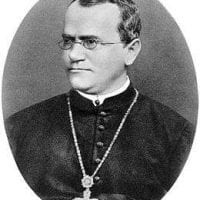
Gregor Mendel announced the laws of genetic inheritance that he discovered as a result of long experiment and observation in a scientific paper published in 1865. But this paper only attracted the attention of the scientific world towards the end of the century. By the beginning of the twentieth century, the truth of these laws had been accepted by the whole scientific community. This was a serious dead-end for Darwin’s theory, which tried to base the concept of “useful traits” on Lamarck.
Here we must correct a general misapprehension: Mendel opposed not only Lamarck’s model of evolution, but also Darwin’s. As the article “Mendel’s Opposition to Evolution and to Darwin,” published in the Journal of Heredity, makes clear, “he [Mendel] was familiar with The Origin of Species …and he was opposed to Darwin’s theory; Darwin was arguing for descent with modification through natural selection, Mendel was in favor of the orthodox doctrine of special creation.”4
The laws discovered by Mendel put Darwinism in a very difficult position. For these reasons, scientists who supported Darwinism tried to develop a different model of evolution in the first quarter of the twentieth century. Thus was born “neo-Darwinism.”
A group of scientists who were determined to reconcile Darwinism with the science of genetics, in one way or another, came together at a meeting organized by the Geological Society of America in 1941. After long discussion, they agreed on ways to create a new interpretation of Darwinism and over the next few years, specialists produced a synthesis of their fields into a revised theory of evolution.
The scientists who participated in establishing the new theory included the geneticists G. Ledyard Stebbins and Theodosius Dobzhansky, the zoologists Ernst Mayr and Julian Huxley, the paleontologists George Gaylord Simpson and Glenn L. Jepsen, and the mathematical geneticists Sir Ronald A. Fisher and Sewall Wright.5
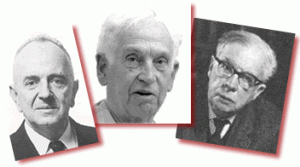
To counter the fact of “genetic stability” (genetic homeostasis), this group of scientists employed the concept of “mutation,” which had been proposed by the Dutch botanist Hugo de Vries at the beginning of the 20th century. Mutations were defects that occurred, for unknown reasons, in the inheritance mechanism of living things. Organisms undergoing mutation developed some unusual structures, which deviated from the genetic information they inherited from their parents. The concept of “random mutation” was supposed to provide the answer to the question of the origin of the advantageous variations which caused living organisms to evolve according to Darwin’s theory-a phenomenon that Darwin himself was unable to explain, but simply tried to side-step by referring to Lamarck. The Geological Society of America group named this new theory, which was formulated by adding the concept of mutation to Darwin’s natural selection thesis, the “synthetic theory of evolution” or the “modern synthesis.” In a short time, this theory came to be known as “neo-Darwinism” and its supporters as “neo-Darwinists.”
Yet there was a serious problem: It was true that mutations changed the genetic data of living organisms, yet this change always occurred to the detriment of the living thing concerned. All observed mutations ended up with disfigured, weak, or diseased individuals and, sometimes, led to the death of the organism. Hence, in an attempt to find examples of “useful mutations” which improve the genetic data in living organisms, neo-Darwinists conducted many experiments and observations. For decades, they conducted mutation experiments on fruit flies and various other species. However, in none of these experiments could a mutation which improved the genetic data in a living being be seen.
Today the issue of mutation is still a great impasse for Darwinism. Despite the fact that the theory of natural selection considers mutations to be the unique source of “useful changes,” no mutations of any kind have been observed that are actually useful (that is, that improve the genetic information). In the following chapter, we will consider this issue in detail.
Another impasse for neo-Darwinists came from the fossil record. Even in Darwin’s time, fossils were already posing an important obstacle to the theory. While Darwin himself accepted the lack of fossils of “intermediate species,” he also predicted that further research would provide evidence of these lost transitional forms. However, despite all the paleontologists’ efforts, the fossil record continued to remain a serious obstacle to the theory. One by one, concepts such as “vestigial organs,” “embryological recapitulation” and “homology” lost all significance in the light of new scientific findings. All these issues are dealt with more fully in the remaining pages of this site.
We have just reviewed in summary form the impasse Darwinism found itself in from the day it was first proposed. We will now start to analyze the enormous dimensions of this deadlock. In doing this, our intention is to show that the theory of evolution is not indisputable scientific truth, as many people assume or try to impose on others. On the contrary, there is a glaring contradiction when the theory of evolution is compared to scientific findings in such diverse fields as the origin of life, population genetics, comparative anatomy, paleontology, and biochemistry. In a word, evolution is a theory in “crisis.”

That is a description by Prof. Michael Denton, an Australian biochemist and a renowned critic of Darwinism. In his book Evolution: A Theory in Crisis (1985), Denton examined the theory in the light of different branches of science, and concluded that the theory of natural selection is very far from providing an explanation for life on earth.6 Denton’s intention in offering his criticism was not to show the correctness of another view, but only to compare Darwinism with the scientific facts. During the last two decades, many other scientists have published significant works questioning the validity of Darwin’s theory of evolution.
In this site, we will examine this crisis. No matter how much concrete evidence is provided, some readers may be unwilling to abandon their positions, and will continue to adhere to the theory of evolution. However, reading this site will still be of use to them, since it will help them to see the real situation of the theory they believe in, in the light of scientific findings.
According to the theory of evolution, living things came into existence by means of coincidences, and developed further as a consequence of coincidental effects. Approximately 3.8 billion years ago, when no living organisms existed on earth, the first simple single-celled organisms (prokaryotes) emerged. Over time, more complex cells (eukaryotes) and multicellular organisms came into being. In other words, according to Darwinism, the forces of nature built simple inanimate elements into highly complex and flawless designs.
In evaluating this claim, one should first consider whether such forces in fact exist in nature. More explicitly, are there really natural mechanisms which can accomplish evolution according to the Darwinian scenario?
Continued on next page…

